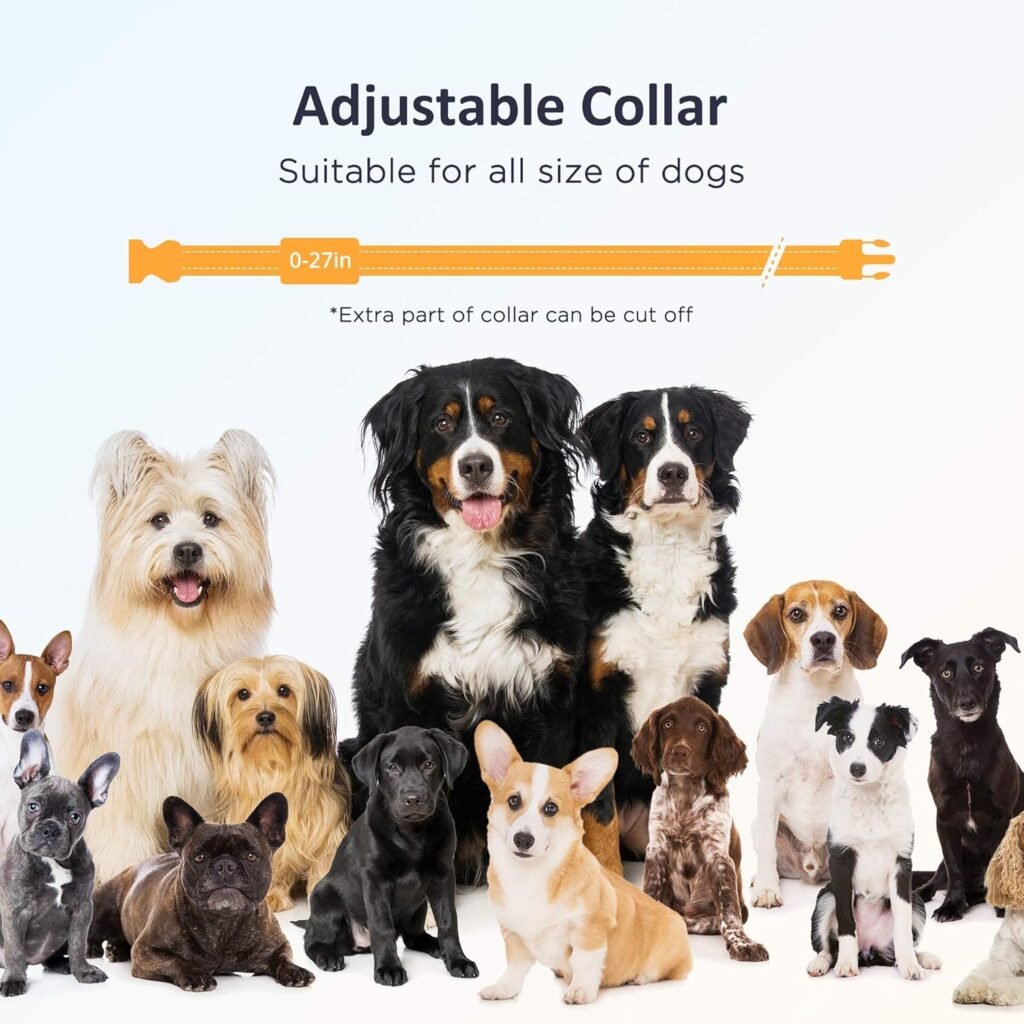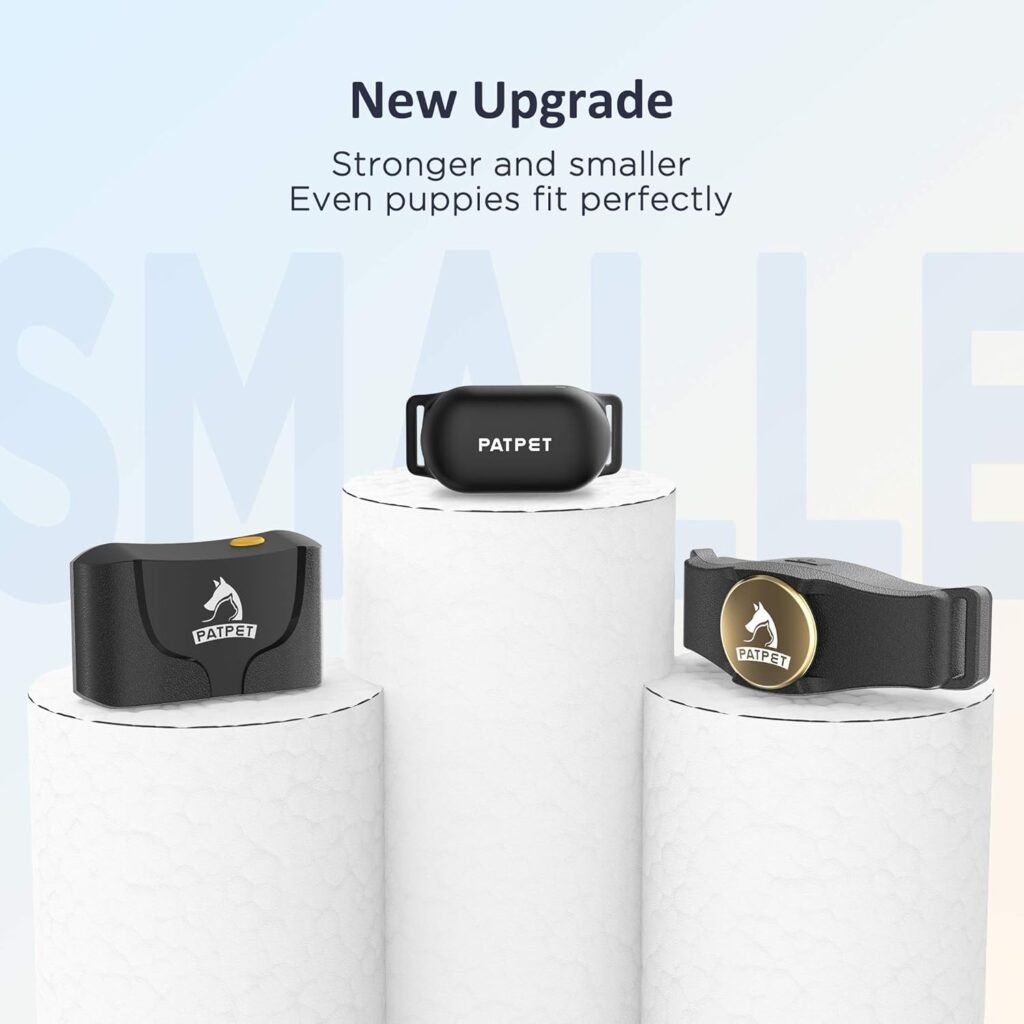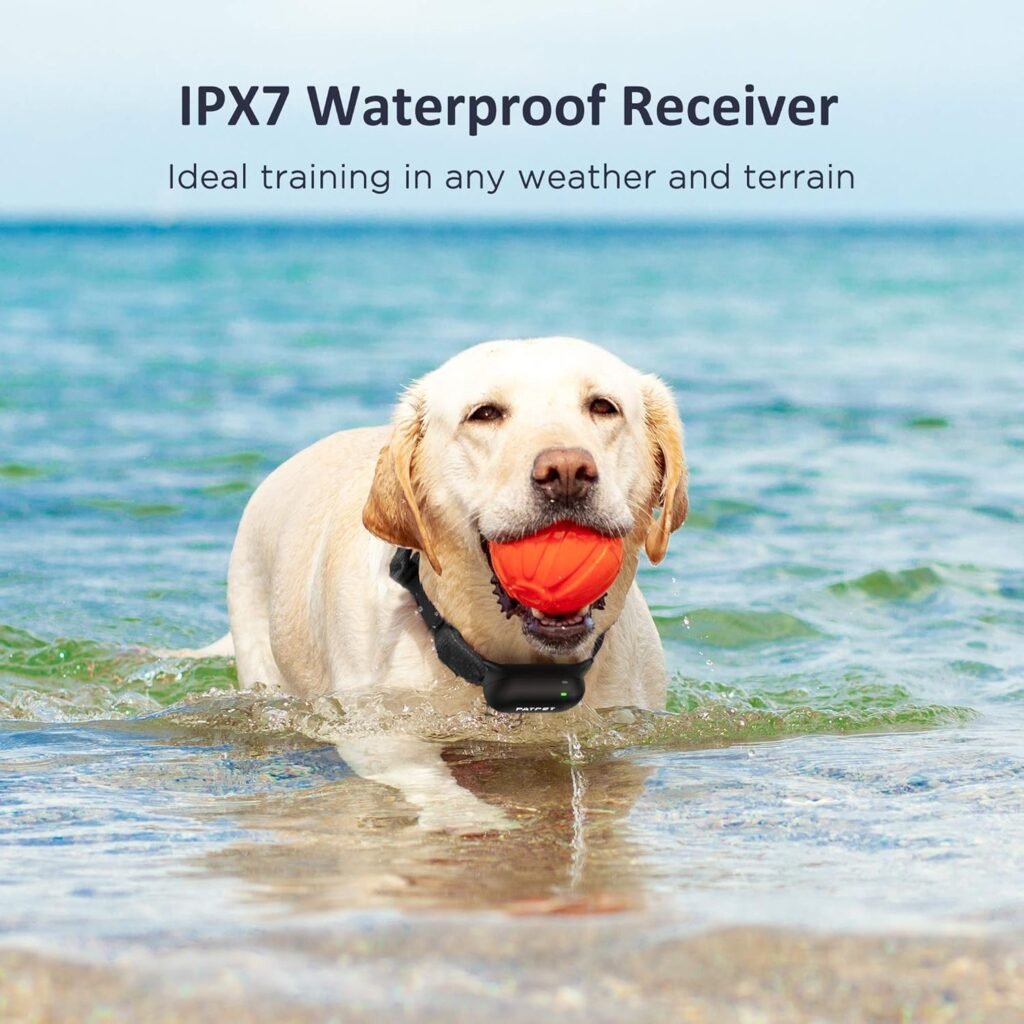Finding the right dog training collar for your pet can feel overwhelming with so many options available. This guide is designed for dog owners who want to make an informed decision based on their pet’s unique personality and training needs, rather than simply grabbing the first collar they see at the pet store.
Your dog’s personality plays a huge role in determining which training collar will work best. A gentle, sensitive dog needs a completely different approach than a stubborn, strong-willed pup. Getting this match wrong can set back your training progress or even damage your relationship with your furry friend.
We’ll walk you through understanding your dog’s personality type and how it affects training choices. You’ll also learn about the different collar options available and which ones work best for specific personality traits. Finally, we’ll cover important safety considerations to keep your dog comfortable and secure during training sessions.
Understanding Your Dog’s Unique Personality Types

Identifying anxious and sensitive dogs
Your dog’s body language tells you everything you need to know about their anxiety levels. Watch for trembling, excessive panting when it’s not hot, or hiding behind your legs during walks. Anxious dogs often exhibit repetitive behaviors like pacing, whining, or destructive chewing when left alone.
Sensitive dogs react strongly to changes in your tone of voice or household routines. They might cower at raised voices, even when you’re not speaking to them, or become visibly stressed during thunderstorms or fireworks. These dogs typically have lower stress thresholds and need gentler training approaches.
- You’ll notice anxious dogs often struggle with:
Separation anxiety when you leave home
Fear-based reactions to new people or environments
Excessive barking or whining in unfamiliar situations
Loss of appetite during stressful times
Submissive urination when excited or nervous
Recognizing stubborn and independent breeds
Independent dogs march to the beat of their own drum. Your commands might receive a calculated look that seems to say, “I’ll think about it.” These dogs often test boundaries and may selectively ignore commands they’ve previously mastered.
Certain breeds like Huskies, Terriers, and Basenji naturally lean toward independence. You’ll see this personality in dogs who:
Take their time responding to familiar commands
Wander off during walks, following their own agenda
Show minimal food motivation compared to other dogs
Demonstrate problem-solving skills that sometimes work against your training goals
Display confident body language with direct eye contact
Your independent dog might comply with training when they see the benefit but resist repetitive exercises they find boring. They’re often intelligent problem-solvers who need mental stimulation alongside physical exercise.

Assessing high-energy and excitable personalities
High-energy dogs practically vibrate with enthusiasm. Your morning routine probably includes a whirlwind of jumping, spinning, and barely-contained excitement before you even reach for the leash.
These dogs live life at full throttle and need outlets for their abundant energy.
You can spot excitable personalities through:
Difficulty settling down after activities
Jumping on visitors or during greetings
Pulling intensely on walks, eager to explore everything
Quick learning but equally quick distraction
Mouth-heavy play styles and enthusiastic tail wagging
Restlessness when confined or understimulated
Your high-energy dog probably excels at activities like fetch, agility training, or hiking but struggles with impulse control. They might know commands perfectly but get too excited to execute them consistently in stimulating environments.
Understanding gentle and compliant temperaments

Gentle dogs are the peacekeepers of the canine world. Your soft-spoken dog likely responds well to positive reinforcement and rarely challenges your authority. They often display natural people-pleasing tendencies and genuinely want to make you happy. These compliant personalities typically show:
Soft eye contact and relaxed body postures
Quick responses to gentle corrections
Natural tendencies to follow rather than lead
Sensitivity to your emotional state
Easy-going attitudes toward new experiences
Minimal resource guarding behaviors
Your gentle dog probably thrives on routine and predictability. They’re often the dogs who seem to apologize when they’ve done something wrong, approaching with lowered heads and submissive body language. These personalities respond best to encouragement rather than firm corrections.
Types of Training Collars and Their Best Applications

Flat buckle collars for everyday training
Your basic flat buckle collar serves as the foundation for most training routines. These simple, adjustable collars work best for dogs who already have decent leash manners and respond well to gentle guidance.
You’ll find they’re perfect for calm, obedient personalities who don’t require heavy correction.
When you’re working with a dog that has a steady temperament, flat collars provide just enough control for basic commands like “sit,” “stay,” and loose-leash walking. They distribute pressure evenly around your dog’s neck, making them comfortable for extended wear during training sessions.
Choose a flat collar made from durable materials like nylon or leather. Make sure you can fit two fingers between the collar and your dog’s neck – snug enough that it won’t slip off, but loose enough to prevent choking.
Martingale collars for dogs that slip out easily
If your dog has a narrow head or thick neck that makes escape artistry their specialty, martingale collars offer the perfect solution. These clever designs tighten when your dog pulls backward, preventing them from backing out while still allowing comfortable breathing when they’re behaving.
You’ll appreciate how martingale collars give you better control without the harsh correction of a choke chain. They’re especially effective for sighthounds like greyhounds and whippets, whose head circumference is often smaller than their neck.
The key advantage lies in their self-limiting design – they can only tighten to a predetermined point, so you don’t have to worry about accidentally choking your dog. This makes them ideal for anxious dogs who might panic and try to escape their collar during stressful training situations.
Head collars for strong pullers
When you’re dealing with a powerful dog who treats walks like a sled-pulling competition, head collars can be game-changers. These tools work on the principle that where the head goes, the body follows giving you control over your dog’s direction without relying on brute strength.
You’ll need patience during the introduction period, as most dogs initially resist having something on their muzzle. Start with short sessions and plenty of treats to create positive associations. Once your dog accepts the head collar, you’ll notice immediate improvements in their pulling behavior.
Head collars work exceptionally well for dominant or strong-willed personalities who view traditional collars as challenges to overcome. They redirect your dog’s forward momentum into a turning motion, naturally discouraging pulling without causing discomfort.
No-pull harnesses for chest-led control
Harnesses that attach at the chest rather than the back transform your pulling powerhouse into a manageable walking companion. When your dog lunges forward, the chest attachment naturally turns their body toward you, disrupting their forward momentum.
You’ll find these particularly effective for dogs with sensitive necks or respiratory issues, as they distribute pressure across the chest rather than concentrating it on the throat. They’re also excellent choices for dogs recovering from neck injuries or those with collapsed tracheas.
The beauty of no-pull harnesses lies in their ability to redirect rather than restrict. Your dog can still move freely and comfortably, but their pulling efforts work against them rather than propelling them forward. This makes training more pleasant for both of you.
Electronic collars for advanced training needs
Electronic collars represent the most sophisticated training tools available, but they require careful consideration and proper education before use. You should only consider these after mastering basic training techniques and preferably with professional guidance.
Modern electronic collars offer multiple levels of stimulation, from barely perceptible vibrations to more noticeable corrections. When used properly, they provide precise, consistent communication that can be especially effective for off-leash training, hunting dogs, or addressing serious behavioral issues like aggression.
Your success with electronic collars depends entirely on proper timing and appropriate intensity levels. Never use them as punishment devices – instead, think of them as communication tools that deliver clear, immediate feedback. They work best with confident, stable dogs who have already mastered basic obedience commands.
Remember that electronic collars aren’t suitable for fearful, anxious, or reactive dogs, as they can worsen these conditions if misused.
Safety Considerations Based on Your Dog’s Physical and Mental Characteristics

Size and breed-specific safety guidelines
Your dog’s size and breed play a crucial role in determining which collar will be safest and most effective.
Small dogs under 20 pounds need gentler correction methods since their delicate necks can be easily injured by traditional choke or prong collars. Toy breeds like Chihuahuas and Yorkshire Terriers should stick to flat collars, martingale collars, or harnesses that distribute pressure across their chest rather than concentrating it on their fragile trachea.
Medium to large breeds can typically handle a wider range of collar types, but you still need to consider their specific characteristics. Brachycephalic breeds (flat-faced dogs) like Bulldogs, Pugs, and Boston Terriers already struggle with breathing, so avoid anything that puts additional pressure on their airways.
These dogs work best with harnesses or very loose-fitting flat collars.
Strong, powerful breeds require extra attention to collar construction. Your German Shepherd or Rottweiler needs a collar made from high-quality materials that won’t break under pressure. Check weight limits on any training collar and ensure it exceeds your dog’s pulling strength, not just their body weight.
Age-appropriate collar selection
Puppies under six months old should never wear correction-based collars like prong or shock collars. Their necks are still developing, and their minds are too young to properly understand the correction. Stick to flat collars or gentle harnesses during this critical development period.
Young dogs between six months and two years can gradually transition to more structured training tools, but you need to be extra cautious. Their bones and cartilage are still growing, making them more susceptible to injury. If you’re considering a martingale or head collar, introduce it slowly and monitor your dog’s reaction closely.
Senior dogs require special consideration based on their changing physical needs. Arthritis, decreased vision, or hearing loss can all affect how your older dog responds to different collar types. A collar that worked perfectly for years might suddenly become uncomfortable or ineffective as your dog ages. Watch for signs like excessive panting, reluctance to move, or behavioral changes that might indicate discomfort.
Health conditions that affect collar choice
Existing health issues significantly impact your collar selection. Dogs with tracheal collapse, a common condition in small breeds, cannot safely wear any collar that puts pressure on their throat. You’ll need to switch to a harness that clips at the chest or back to avoid triggering coughing fits or breathing difficulties.
Neck injuries, whether from previous trauma or ongoing conditions like cervical disc disease, make traditional collars dangerous. Your veterinarian might recommend avoiding collars entirely in favor of body harnesses that don’t touch the neck area at all.
Skin allergies and sensitivities also matter. Some dogs develop contact dermatitis from certain collar materials like leather, nylon, or metal hardware. If your dog has sensitive skin, look for hypoallergenic materials and ensure any collar fits properly without rubbing or chafing.
Heart conditions can make certain training methods dangerous. Dogs with heart problems shouldn’t use shock collars or any high-stress training methods that could trigger cardiac episodes. Stick to positive reinforcement methods with comfortable, non-restrictive collars.
Avoiding psychological damage with proper selection
Choosing the wrong collar can create lasting behavioral problems that are much harder to fix than the original training issues. Fearful or anxious dogs can become even more withdrawn if you use intimidation-based collars. These sensitive personalities need gentle, confidence-building approaches with comfortable equipment that doesn’t add to their stress levels.
Aggressive dogs present a different challenge. While it might seem logical to use stronger correction methods, poorly timed or excessive corrections can actually increase aggression by heightening your dog’s frustration and arousal levels. Work with a professional trainer to determine whether your dog’s aggression stems from fear, dominance, or other factors before selecting training equipment.
Overly excited or high-energy dogs might seem like good candidates for correction collars, but these personalities often respond better to equipment that redirects their energy rather than suppressing it. A front-clip harness might be more effective than a prong collar for managing pulling behavior in these dogs.
Remember that your dog’s past experiences matter too. A rescue dog with an unknown history might have negative associations with certain collar types. Start with the gentlest option and build trust before considering more structured training tools. Watch your dog’s body language carefully – ears back, excessive panting, or shutdown behavior all signal that your current collar choice isn’t working for your dog’s psychological well-being.
Training Effectiveness Factors for Different Personalities

Positive reinforcement compatibility with collar types
Your dog’s personality directly impacts how well different collars work with positive reinforcement training methods. Sensitive dogs respond beautifully to flat collars paired with treats and praise, as these gentle personalities thrive when you reward good behavior rather than correct mistakes. You’ll find that anxious or fearful dogs actually perform worse with correction-based collars, so stick with reward-based training using comfortable flat collars or harnesses.
Confident and outgoing dogs often benefit from head collars during positive reinforcement sessions because these tools give you better control while still allowing you to reward desired behaviors immediately. You can use treats, toys, or verbal praise effectively with head collars since they don’t interfere with your dog’s ability to receive rewards.
If you’re working with a highly food-motivated dog, martingale collars work well during training sessions because they provide gentle feedback without being harsh, and you can still deliver treats quickly. Avoid using prong or electronic collars with positive reinforcement training – these tools send mixed messages that confuse your dog and can actually slow down learning progress.
Timing and consistency requirements by personality
Different personality types need varying approaches to timing and consistency in collar training. Highenergy dogs require split-second timing with your corrections and rewards because their minds move quickly from one stimulus to the next. You need to respond to their behavior within three seconds, or they won’t connect your response to their action.
Stubborn or independent dogs demand rock-solid consistency from you and every family member. If you use a martingale collar for loose-leash walking, everyone in your household must use the same collar and apply the same techniques. Mixed messages will set your training back weeks.
Sensitive dogs need you to be incredibly consistent with gentle approaches. You can’t use a regular collar one day and switch to a head collar the next without proper conditioning. These dogs also require longer adjustment periods – plan for 2-3 weeks of gradual introduction with any new collar type.
Anxious dogs need predictable routines with their training collars. Put the collar on at the same time each day, follow the same pre-walk routine, and use consistent verbal cues. Your timing needs to be slower and more deliberate with these personalities, giving them time to process what you’re asking.
Professional trainer recommendations for challenging cases
Professional trainers consistently recommend seeking expert help when you’re dealing with aggressive, severely fearful, or reactive dogs. These challenging cases require specialized collar selection that goes beyond basic personality matching. You shouldn’t attempt to choose correction collars like prong or electronic collars for these dogs without professional guidance.
Certified trainers often suggest starting with the gentlest option possible – typically a well-fitted flat collar or front-clip harness – even for strong-willed dogs. They can assess whether your dog’s challenging behavior stems from fear, frustration, or lack of training, then recommend appropriate collar upgrades if needed.
Many professionals warn against using head collars on dogs with bite histories or extreme fear responses without proper conditioning protocols. You’ll need hands-on guidance to introduce these tools safely and effectively.
Working breeds with high drive often need trainers who specialize in these personalities. They can recommend specific collar combinations – like using a flat collar for daily wear and switching to a training collar only during structured sessions with professional supervision.
Remote training collars require professional instruction for any challenging case. Trainers emphasize that you must understand your dog’s stress signals, proper timing, and appropriate stimulation levels before using these tools independently.
Finding the perfect training collar for your dog comes down to really knowing who they are as an individual. Every dog has their own personality quirks, energy levels, and learning style, which means there’s no one-size-fits-all solution. When you take the time to understand whether your pup is shy and sensitive or bold and stubborn, you can pick a collar that works with their nature instead of against it. The key is matching the right tool to your dog’s specific needs while always keeping their safety and comfort at the top of your list.
Remember that the collar is just one part of the training equation. Your consistency, patience, and positive reinforcement will always be more important than any piece of equipment you buy. Start with the gentlest option that gets results for your dog’s personality type, and don’t be afraid to adjust your approach as you both learn what works best. The goal is to build a stronger bond with your furry friend while helping them become the well-behaved companion you both want them to be.
Stay tuned to our blog and train your dogs like a pro! 🐾📘

